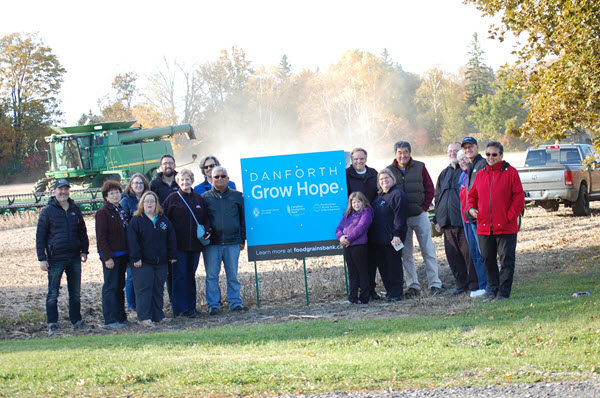To help fight famine, the Foodgrains Bank “organized farmers to collect grain and ship it overseas,” Taylor-Lewis says.
“Today we are a partnership of 15 churches and church agencies that are working together to respond to food needs around the world,” she adds.
Over time, the organization has changed.
“The main change that has happened is that we’ve moved from shipping grain overseas to purchasing food closer to the places of crisis,” said Taylor-Lewis.
“We advocate for public policy that improves the way in which Canadian aid helps out in food crisis situations,” she explained. “When Foodgrains Bank started, 90 per cent of Canadian aid had to purchase food from Canada, and Foodgrains Bank helped to advocate for a change in that policy.”
When grain is purchased closer to where it’s needed, the response is faster, the organization can provide more culturally appropriate food “and, third, you also (are) not undermining the local markets,” Taylor-Lewis explained.
Instead of shipping unfamiliar grain overseas, the organization is “using the money in ways that are more sustainable and support recovery better,” Taylor-Lewis said.
About 65 per cent of the Canadian Foodgrains Bank work is crisis-based, such as the 2019 cyclone and flooding in southern Africa, the ongoing crisis in Syria and refugees in Lebanon. The other 35 per cent of the work involves long-term development, working with farmers and community members on agronomics and income-generating activities, Taylor-Lewis explained.

Katherine Chiphwanya holds a bag of maize flour she received in the aftermath of Cyclone Idai through Foodgrains Bank member Presbyterian World Service & Development, with funding from the Humanitarian Coalition. Chiphwanya is a farmer in Malawi whose crops were washed away in the cyclone, leaving her and her family with nothing to harvest. Through the Foodgrains Bank, Chiphwanya received monthly food packages of maize flour, beans and cooking oil.
Working with partners in the country in need is a key component to Foodgrains Bank activities.
“Foodgrains Bank members work with partners overseas. Our model is such that we always work with local organizations to implement the programs. Foodgrains Bank provides the funding, technical support, advice on program structure and design, but the actual operation of the program and input on design of the program so that it’s culturally appropriate is done always with a local partner,” Taylor-Lewis explained.
Farmers are integral to the Foodgrains Bank functions.
“Foodgrains Bank is fundamentally a grassroots effort,” said Taylor-Lewis. “About 50 per cent of contributions that come from Canadians come from farmers that do community projects, which we call growing projects.
“They grow crops on land that is either donated or they have access to in some way, and they sell the crops and the proceeds from those crops go to the Foodgrains Bank,” she added.

Volunteers with the Arborg and District growing project in Interlake, Manitoba gather to harvest a crop.
Volunteers also organize and host auctions, bake sales, dinners and other events with proceeds going to Canadian Foodgrains Bank.
“So much of our funding comes from Canadians doing community-based functions in order to raise money to contribute,” Taylor-Lewis said.

Danforth Grow Hope supporters gathered to celebrate the crop being harvested. As part of this project, urban supporters from churches in the Danforth area of downtown Toronto raise money to help cover the cost of inputs such as seed and fertilizer for farmers in Stouffville, Ontario who plant, tend and harvest a crop to help end world hunger.
Of course, community fundraising events are not safe or possible due to the ongoing COVID-19 pandemic.
“Amid the coronavirus pandemic, Foodgrains Bank supporters are staying committed to helping vulnerable families around the world. While fundraising events have been postponed, growing project volunteers continue to plan for this year’s growing season. These efforts will go a long way to ensure families facing hunger can access the food they need during this global crisis,” said a statement from Canadian Foodgrains Bank.
For the last two years, the Canadian Foodgrains Bank has been in the top 10 impact charities ranked by Charity Intelligence Canada.
Canadian Foodgrains Bank photos